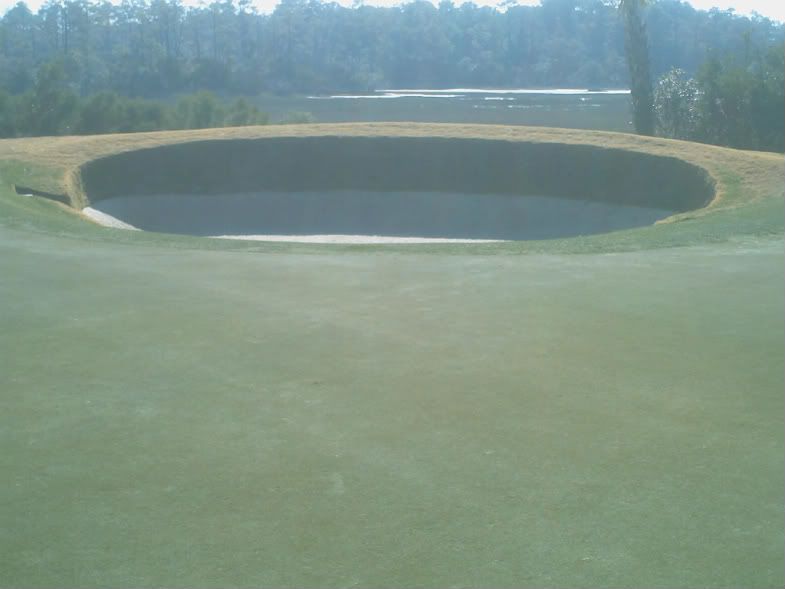Hallelujah!!! Some one besides me said it, "Raynor's work is proof that golfers don't automatically reject that which does not look natural. I would also point to another much loved feature,
pot bunkers. They are odd looking in their shape, but like Raynor's work, pot bunkers fulfill a function that serves golf architecture better than it does nature."
Freakin' pot bunkers for goodness sakes! Natural looking...NO WAY!!!

I've said things like this in the past, regarding how un-natural pot bunkers look...but all I get are weird looks. But if they fill a function, give the golfer reason to think before he strikes a golf ball, then they have a place on a golf course, correct?
And I also agree with what Sean said in regards to a sliding scale regarding naturalism. Some people look at that picture of the Short at Sleepy Hollow and see how the lines flow along the hill and over the green and down the hill and it looks fine and natural. Others see the bunker and can't get over its artificial look. Frankly, I "get" both points of view.
But perhaps the first step to getting on the right path regarding naturalism is to get the routing to be in harmony with the natural landscape. And then not to put up something so hideously man-made that it instantly puts off golfers. Other than that, maybe it is personal taste along that sliding scale.
And, as a matter of fact, Tim Bert said something to me on this site that really hit home with me regarding this naturalism thing. I asked, the question I ask all the time regarding this subject, why is natural so important? His response was something to the effect of this...It may or may not be important to how a golf course plays, but some people really appreciate the natural aspects of the hole/course and its beauty. Sounds a lot like the sliding scale thing that Sean is talking about to me.
Oh yeah..I've just got to show one more picture, I was scanning through Ran's profiles to find some images of big time golf courses. Look at this photo of Royal County Down. I'm no expert on the natural landscapes of Northern Ireland, but holy cow...that looks absolutely incredible.

EDIT...Peter posted as I was typing and I think he's totally nailed it.